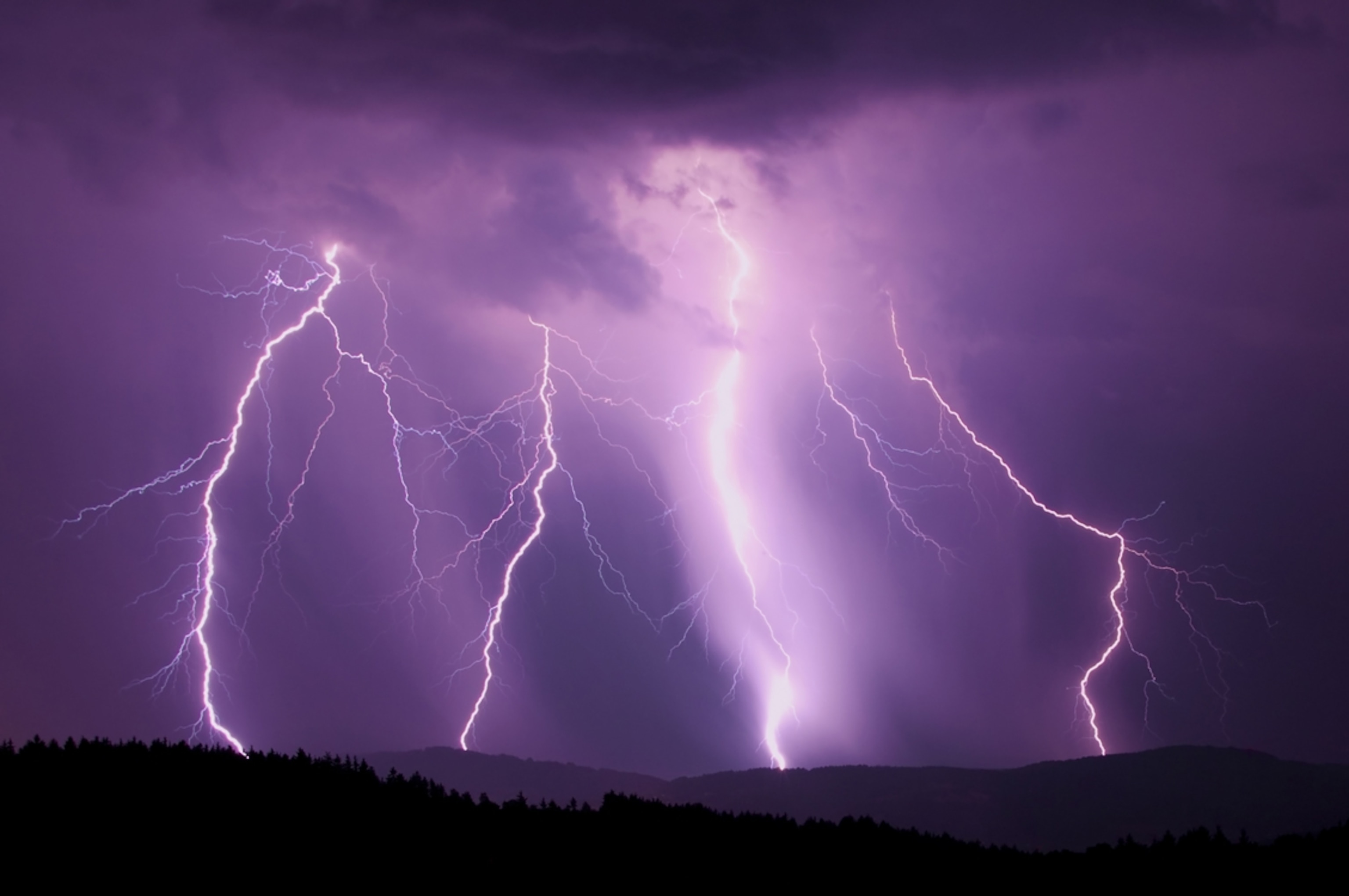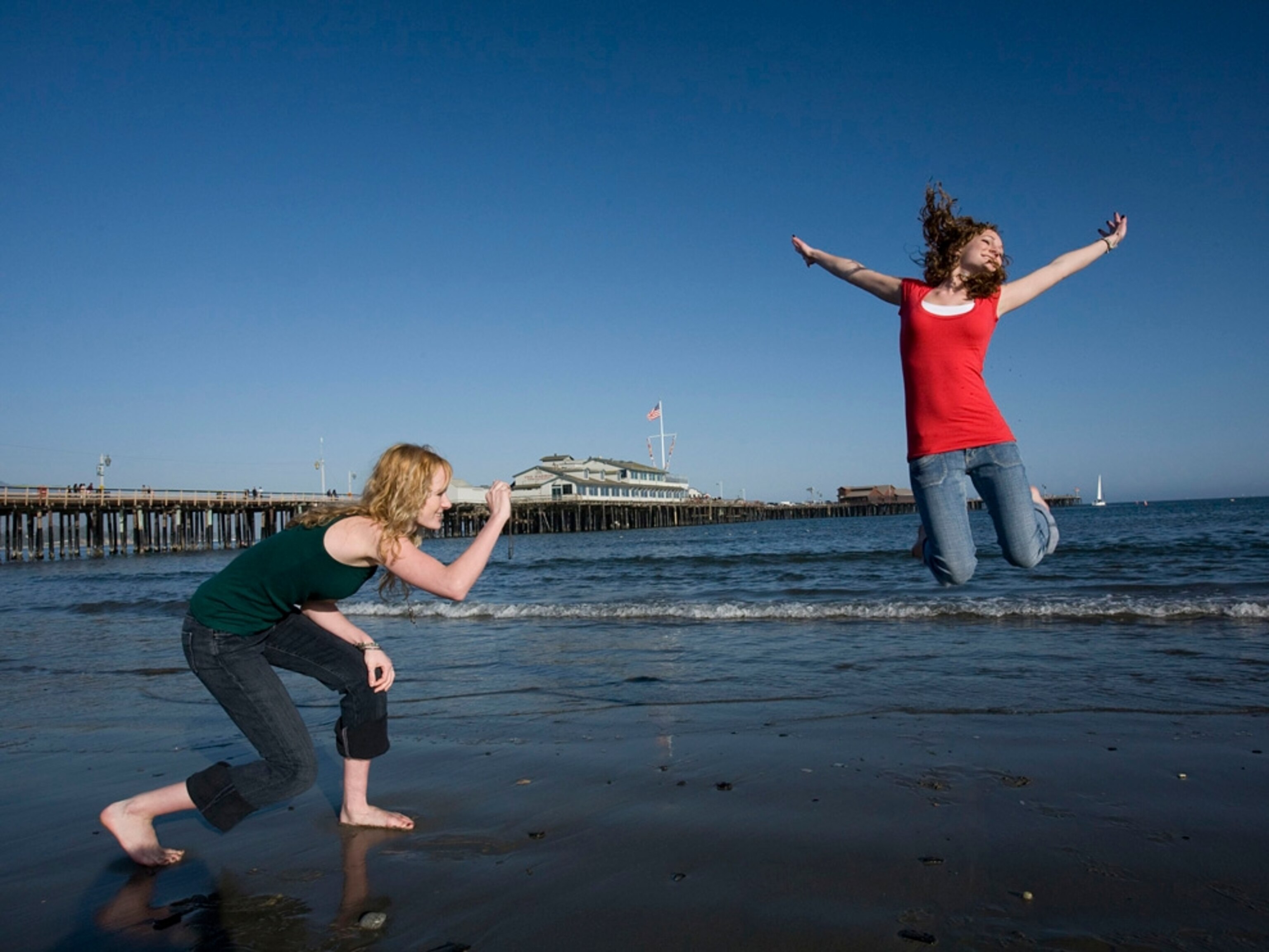
Don’t let children just watch the weather—have them create it instead.
These 4 experiments will teach kids about lightning, rain, and more.
Spring and summer bring on some pretty epic weather like thunderstorms and tornados. That can also bring on some pretty epic learning opportunities.
Weather is often the first science that kids learn and can inspire curiosity in other areas of science too. “Weather affects what kids do every day, like whether they can go outside and play or if they have to wear raincoats,” says Mary Fairbanks, lead education outreach meteorologist at the National Weather Service, which offers an online weather school for kids. “So they’re very much aware of the weather, and they want to learn why it happens.”
Local meteorologists have tapped into kids’ curiosity by teaching them lessons on air and online. “Using hands-on activities will keep kids interested much longer than reading text lines in a book,” says Brittney Bowman, a meteorologist with WJHL in Johnson City, Tennessee. “Being able to physically see a process—especially one that the child created—can help them remember the concept.”
Inspire your budding meteorologists with the following experiments, plus some video explainers.
Wild Weather: Lightning
What you’ll need: A balloon, a lightbulb, wool (unless you want to use your hair), and a dark room.
What to do: Blow up the balloon and have your kid rub it against the wool or their hair to build up static electricity. In a dark room, shake the balloon over the top of the unplugged lightbulb as close as you can without touching it. The bulb will flicker from the static in the air.
The science: Charged particles called ions build up in clouds. These positive and negative ions group together so that each cloud develops a positive or negative charge. Positively charged clouds rise, creating a tall cloud called a thunderhead. Negatively charged clouds remain closer to Earth, which is also positively charged. (Check out a kid-friendly explanation of lightning.)
But opposites attract. When the negative charges build up and become too much for the atmosphere to hold, they release electricity toward something positively charged—either another cloud or the ground. That’s what you see when lightning strikes.
That’s sort of what’s happening with the balloon and wool: Rubbing the balloon builds up a negative charge, which creates static electricity. The bulb, like the ground, has a positive charge, which attracted the negative ions from the balloon. When too many negative ions built up in the balloon—zap! Your kids made a tiny bolt of lightning flicker inside the lightbulb.
Watch it: Bowman demonstrates how lightning forms.
Wild Weather: Cloud Formation
What you need: Isopropyl alcohol and an empty plastic water bottle
What to do: Pour about half an inch of isopropyl alcohol into the bottom of the bottle. Tightly screw on the cap, and swirl the alcohol around so that it wets the inside.
Have kids grasp the bottle with both hands and twist their hands in opposite directions so that the bottle starts to crush in on itself. (Little ones might need some help.) The more they twist, the more difficult twisting will become. That’s because as they’re decreasing the space available inside the bottle, they’re increasing the bottle’s internal pressure.
Twist the bottle until you can’t twist anymore. Then let go. Poof! You have a cloud. (See photos of the experiment on Nat Geo Kids.)
The science behind the weather: A clear, blue sky usually means high atmospheric pressure and temperature compared to other areas nearby. That’s what’s happening inside the bottle as you twist: The pressure increases, which makes the contents hotter. A cloud forming in the sky needs moisture, atmospheric particles, and cooling air. By letting go of the bottle—which expands the space inside, therefore lowering the pressure and making the air cooler—the moisture that’s naturally in the air inside condenses on the alcohol particles to form a cloud. That’s just like moisture in the sky condensing on particles in the air to form a cloud.
Watch it: Bowman demonstrates how to make a cloud.
Wild Weather: Low Atmospheric Pressure (a must-have for storms)
What you’ll need: A jar, scissors, balloon, paper, straw, tape or glue, marker
What to do: Cut off the neck of the balloon. Then stretch the balloon over the jar’s opening so it’s flat like a drum. Have your kid to cut an arrow out of paper, and stick it inside the straw so it points outward. Lay the straw flat against the top-center of the balloon so that the arrow sticks out over the jar, and tape or glue. Place the jar beside a piece of paper you’ve taped to the wall, and draw a line straight out from the arrow’s point. Above this line, write “High Pressure;” below, “Low Pressure.” Boom: Your kid has just made a barometer, which measures atmospheric pressure. Depending on the day’s atmospheric pressure, the arrow will rise and fall. Have kids record their readings as well as the weather over a few days.
The science: Atmospheric pressure is the force exerted by the weight of the air. When it increases, the air outside the jar will sink down on the balloon and the end of the straw, causing the arrow to rise and point to “High Pressure.” Outdoors, sinking air near the surface warms, and the moisture dries out. “That’s why we typically see clear conditions associated with high pressure,” Bowman says.
When atmospheric pressure decreases, less air presses down on the balloon. The air inside the jar rises, causing the balloon to expand slightly and the arrow to fall. Outdoors, the air is also rising into the atmosphere, where it will cool and condense, then possibly fall as rain. That’s why when the arrow points to “Low Pressure,” clouds or storms are probably coming.
Watch it: Bowman shows how to make a barometer.
Wild Weather: Tornadoes
What you’ll need: 2 empty 2-liter bottles with labels removed, duct tape, tap water, food coloring or glitter
What to do: Add a few drops of food coloring or scoops of glitter to one of your 2-liter bottles, then add water until it’s three-quarters full. Now line up the mouths of the bottles so they cover each other, and have your kid tightly tape them together so water can’t leak out. Help your kid flip the two bottles over so the full bottle is on top, and give it a spin.
The science: As the water travels from the top bottle to the bottom bottle, it will continue to spin, creating a tornado. This water tornado keeps its shape because of centripetal force, which pulls the water toward the center of the bottle as gravity pulls it down. Real life tornados are a bit more complicated. Winds in a tornado keep spinning because they’re in “cyclostrophic balance.” (Fun fact: cyclo refers to cyclone, a low-pressure system, which is needed for a storm; trophic means to turn.) To create that spin, centrifugal force, the force you feel in a car going around a tight curve, pushes in the opposite direction of the force caused by the differences in atmospheric pressure as that pressure decreases higher up in the atmosphere. (In scientist-speak, that’s called the pressure gradient.)
“The centrifugal force pushes outward, while the pressure gradient pushes inward,” Bowman says. “This balance results in a circular motion.” (Check out a kid-friendly description of tornadoes.)
Watch it: Bowman demonstrates how to make a tornado in a bottle.



